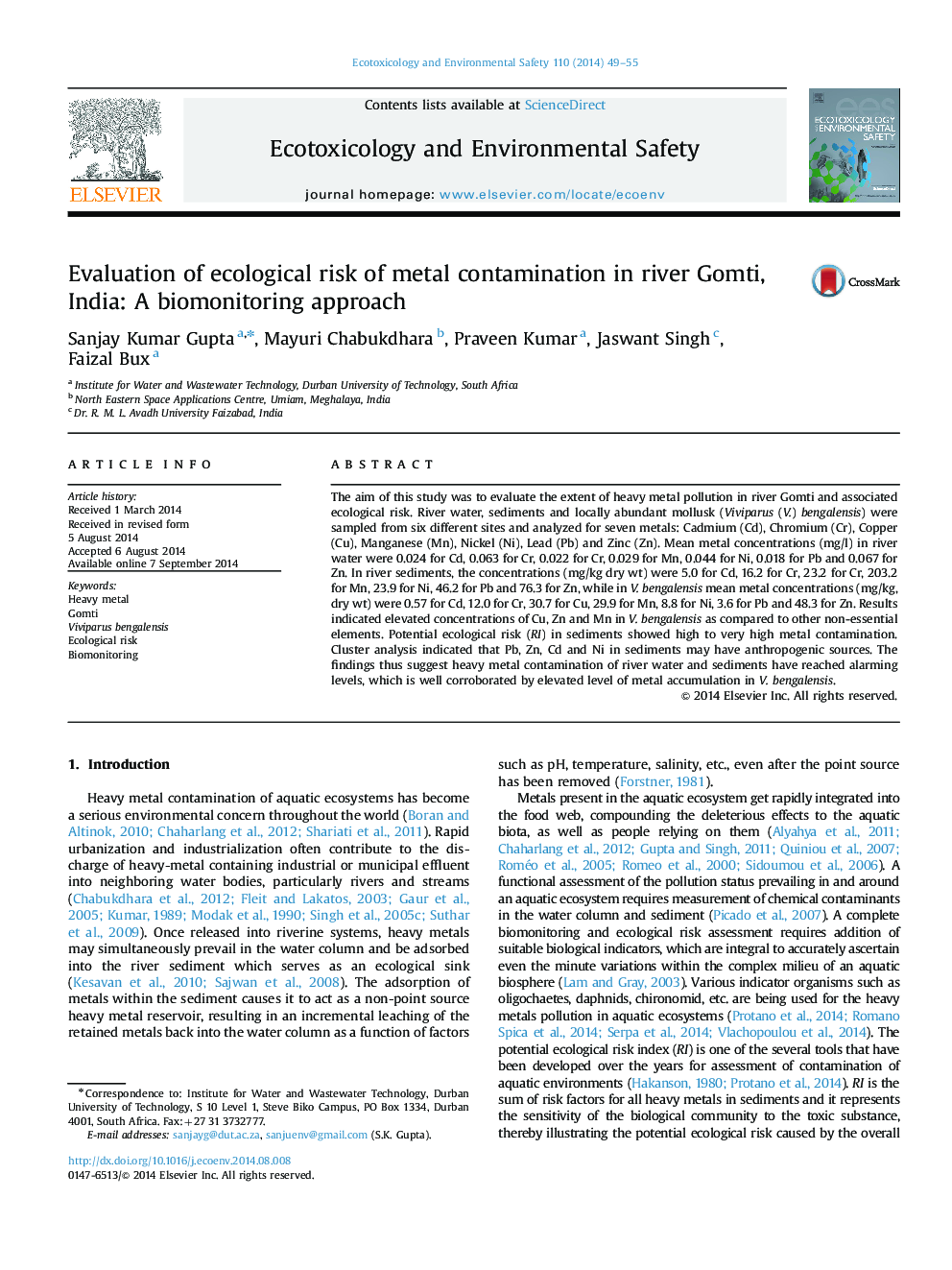| Article ID | Journal | Published Year | Pages | File Type |
|---|---|---|---|---|
| 4419900 | Ecotoxicology and Environmental Safety | 2014 | 7 Pages |
•Gomti, major tributary of River Ganges, is heavily contaminated with heavy metals.•Heavy metal distribution was higher in the mid-stream of Gomti.•RI index of metals is very high which indicated serious anthropogenic pollution.•V. bengalensis shows high levels of metal bioaccumulation.•Rapid measures to control anthropogenic pollution of Gomti is the need of the hour.
The aim of this study was to evaluate the extent of heavy metal pollution in river Gomti and associated ecological risk. River water, sediments and locally abundant mollusk (Viviparus (V.) bengalensis) were sampled from six different sites and analyzed for seven metals: Cadmium (Cd), Chromium (Cr), Copper (Cu), Manganese (Mn), Nickel (Ni), Lead (Pb) and Zinc (Zn). Mean metal concentrations (mg/l) in river water were 0.024 for Cd, 0.063 for Cr, 0.022 for Cr, 0.029 for Mn, 0.044 for Ni, 0.018 for Pb and 0.067 for Zn. In river sediments, the concentrations (mg/kg dry wt) were 5.0 for Cd, 16.2 for Cr, 23.2 for Cr, 203.2 for Mn, 23.9 for Ni, 46.2 for Pb and 76.3 for Zn, while in V. bengalensis mean metal concentrations (mg/kg, dry wt) were 0.57 for Cd, 12.0 for Cr, 30.7 for Cu, 29.9 for Mn, 8.8 for Ni, 3.6 for Pb and 48.3 for Zn. Results indicated elevated concentrations of Cu, Zn and Mn in V. bengalensis as compared to other non-essential elements. Potential ecological risk (RI) in sediments showed high to very high metal contamination. Cluster analysis indicated that Pb, Zn, Cd and Ni in sediments may have anthropogenic sources. The findings thus suggest heavy metal contamination of river water and sediments have reached alarming levels, which is well corroborated by elevated level of metal accumulation in V. bengalensis.
